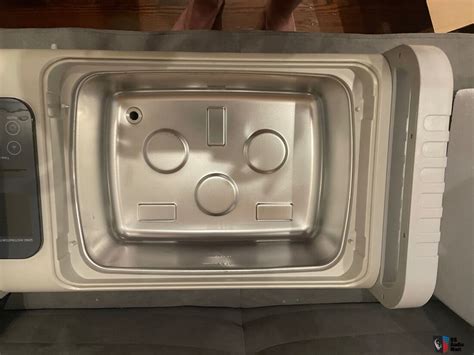Ultrasonic cleaning is a highly effective method for restoring electronics and printed Circuit Board s (PCBs). This non-invasive technique uses high-frequency sound waves to remove dirt, grime, and corrosion from delicate components without causing damage. In this comprehensive guide, we’ll explore the benefits of ultrasonic restoration, the equipment needed, and step-by-step instructions for restoring your electronics and PCBs.
Benefits of Ultrasonic Restoration
Deep cleaning: Ultrasonic waves penetrate deep into crevices and hard-to-reach areas, removing contaminants that traditional cleaning methods might miss.
Safe for delicate components: Unlike harsh chemicals or abrasive cleaning methods, ultrasonic cleaning is gentle and safe for sensitive electronic components.
Time-efficient: Ultrasonic cleaning is a fast process, allowing you to restore multiple itEMS simultaneously.
Cost-effective: Investing in an ultrasonic cleaner can save you money in the long run by extending the life of your electronics and PCBs.
Equipment and Materials Needed
To get started with ultrasonic restoration, you’ll need the following equipment and materials:
Ultrasonic cleaner
Cleaning solution (e.g., isopropyl alcohol, distilled water)
Protective gloves
Safety glasses
Soft-bristled brush
Lint-free cloths
Compressed air (optional)
Choosing the Right Ultrasonic Cleaner
When selecting an ultrasonic cleaner for restoring electronics and PCBs, consider the following factors:
Factor
Description
Tank size
Choose a tank size that accommodates your largest items
Frequency
Higher frequencies (40-50 kHz) are better for delicate components
Power
Higher wattage provides more intense cleaning
Heating
A built-in heater can enhance cleaning performance
Step-by-Step Guide to Ultrasonic Restoration
Follow these steps to restore your electronics and PCBs using an ultrasonic cleaner:
1. Preparation
Wear protective gloves and safety glasses.
Disassemble the electronic device or PCB, if possible.
Remove any visible dirt, dust, or debris using a soft-bristled brush or compressed air.
2. Cleaning Solution
Fill the ultrasonic cleaner tank with the appropriate cleaning solution.
For general cleaning, use a mixture of 90% distilled water and 10% isopropyl alcohol.
For heavy corrosion or oxidation, use a specialized electronic cleaning solution.
Ensure the cleaning solution covers the items completely but does not exceed the tank’s fill line.
3. Ultrasonic Cleaning
Place the items in the ultrasonic cleaner basket, ensuring they do not touch each other or the tank walls.
Set the appropriate cleaning time and temperature according to the manufacturer’s instructions.
Start the cleaning cycle and let the ultrasonic waves do their work.
4. Rinsing and Drying
Once the cleaning cycle is complete, remove the items from the tank using tongs or the basket.
Rinse the items thoroughly with distilled water to remove any remaining cleaning solution.
Use lint-free cloths or compressed air to dry the items completely.
5. Reassembly and Testing
Reassemble the electronic device or PCB.
Test the functionality of the restored item to ensure proper operation.
Maintenance and Care
To ensure the longevity of your ultrasonic cleaner and restored electronics, follow these maintenance and care tips:
Change the cleaning solution regularly to maintain its effectiveness.
Clean the ultrasonic cleaner tank after each use to prevent the buildup of contaminants.
Store your restored electronics in a clean, dry environment to prevent future corrosion or damage.
Frequently Asked Questions (FAQ)
Can ultrasonic cleaning damage my electronics?
How often should I clean my electronics with an ultrasonic cleaner?
Can I use tap water in my ultrasonic cleaner?
How long should I run the ultrasonic cleaning cycle?
Can I use ultrasonic cleaning on all types of electronics?
Conclusion
Ultrasonic restoration is a powerful and efficient method for restoring electronics and PCBs to their former glory. By investing in an ultrasonic cleaner and following the step-by-step guide outlined in this article, you can save time, money, and extend the life of your valuable electronic devices. Remember to prioritize safety, use the appropriate cleaning solutions, and maintain your equipment for the best results. With ultrasonic restoration, you can breathe new life into your electronics and PCBs, ensuring their optimal performance for years to come.







Leave a Reply